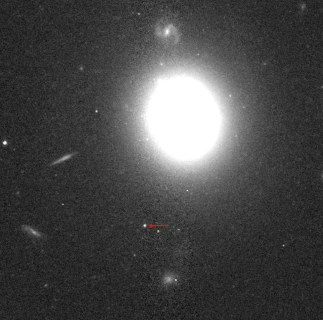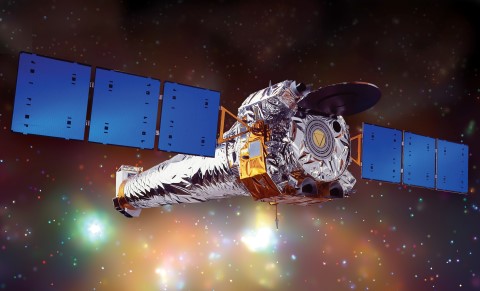
An international team of astronomers is increasing the understanding of cosmic gravitational phenomena with the discovery and observation of a potential rare type of black hole in the process of tearing apart and feasting on a nearby star.
Team member, University of Queensland astronomer Associate Professor Holger Baumgardt of the School of Mathematics and Physics said this cosmic phenomenon called an intermediate mass black hole (IMBH), was discovered gorging on the resulting debris of the star, and throwing off an enormous amount of light in the process.

He said astronomers had clear evidence of only two black hole types: supermassive black holes from the centres of galaxies, and stellar-mass black holes formed at the end-of-life of massive stars.
“Lying between these extremes is a more retiring black hole family member: intermediate-mass black holes (IMBHs), that are especially elusive, and thus very few have been found,” said Dr Baumgardt.
“This is incredibly exciting as this type of black hole hasn’t been observed so clearly before or observed in the act of tearing a star apart,” said lead scientist Dr Dacheng Lin of the University of New Hampshire, USA.
“Since star-triggered IMBH outbursts happen rarely, this discovery suggests that there may be many more dormant IMBHs lying in the edges of galaxies across the local Universe.
“During a merger they would sink towards the centre of their home galaxy and subsequently be swallowed by the supermassive black hole there. By studying the distinguishable waves emitted at this time we can start to better understand these complex cosmic gravitational phenomena.”
Dr Lin and colleagues discovered the IMBH with a mass 50,000 times of our Sun, inside a galaxy 760 million light years away, as part of a galaxy survey taken in 2006 and 2009.
The researchers determined the star was likely disrupted by the IMBH sometime in October 2003, and produced a burst of energy that decayed over the following 10 years. The galaxy is named 6dFGS gJ215022.2-055059, while the X-ray source inferred to contain the IMBH is named 3XMM J215022.4−055108.
The study, A luminous X-ray outburst from an intermediate-mass black hole in an off-centre star cluster, is published in Nature Astronomy (doi 10.1038/s41550-018-0493-1). The study used data from ESA’s XMM-Newton X-ray space observatory, NASA’s Chandra X-Ray Observatory, and NASA’s Swift X-Ray Telescope, and additional images from the Canada-France-Hawaii Telescope, the NASA/ESA Hubble Space Telescope, NAOJ’s Subaru Telescope, the Southern Astrophysical Research (SOAR) Telescope, and the Gemini Observatory.
Along with UQ and the University of New Hampshire, it also involves researchers from Michigan State University; Gemini Observatory/AURA, Chile; Universidad Nacional Autónoma de México; San José State University; University of California; Eureka Scientific; Netherlands Institute for Space Research; University of Alabama; MIT; Universit de Toulouse; University of Amsterdam; Université de Strasbourg; and Herzberg Institute of Astrophysics.
Media: Associate Professor Holger Baumgardt, (UQ) h.baumgardt@uq.edu.au, +61 7 336 53430 or Dr Dacheng Lin, (University of New Hampshire) dacheng.lin@unh.edu, +1 (603)862-4379



